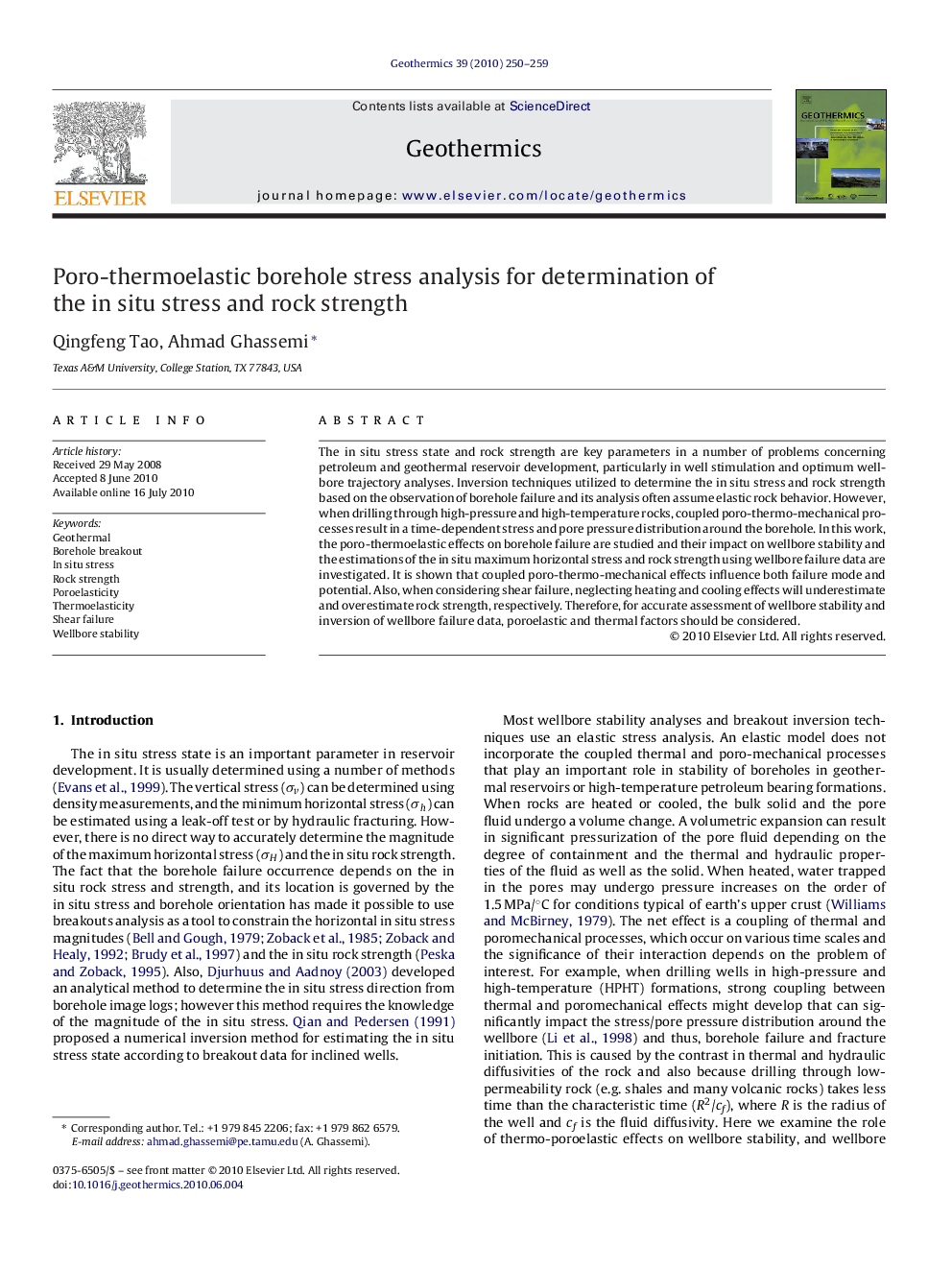| Article ID | Journal | Published Year | Pages | File Type |
|---|---|---|---|---|
| 1742551 | Geothermics | 2010 | 10 Pages |
The in situ stress state and rock strength are key parameters in a number of problems concerning petroleum and geothermal reservoir development, particularly in well stimulation and optimum wellbore trajectory analyses. Inversion techniques utilized to determine the in situ stress and rock strength based on the observation of borehole failure and its analysis often assume elastic rock behavior. However, when drilling through high-pressure and high-temperature rocks, coupled poro-thermo-mechanical processes result in a time-dependent stress and pore pressure distribution around the borehole. In this work, the poro-thermoelastic effects on borehole failure are studied and their impact on wellbore stability and the estimations of the in situ maximum horizontal stress and rock strength using wellbore failure data are investigated. It is shown that coupled poro-thermo-mechanical effects influence both failure mode and potential. Also, when considering shear failure, neglecting heating and cooling effects will underestimate and overestimate rock strength, respectively. Therefore, for accurate assessment of wellbore stability and inversion of wellbore failure data, poroelastic and thermal factors should be considered.
